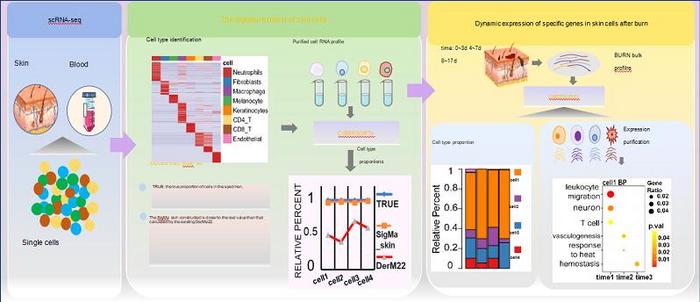In findings that may help promote wound healing, scientists have developed a new high-resolution method to analyze skin gene expression post burns.
The findings were published in the Journal of Burn Care & Research: official publication of the American Burn Association.
Studying the timeline of gene activity after a burn is crucial for deciding optimal time for treatment. For more than 30 years, scientists have mainly relied on analyzing overall gene activity in tissues to understand these changes. However, this approach can’t distinguish between different cell types or specific gene activity in those cells. It only provides an average of all gene activity across all cell types.
A research group led by Prof. LI Xueling from Hefei Institutes of Physical Science (HFIPS), Chinese Academy of Sciences (CAS) developed a high-resolution cell type deconvolution mode method using CIBERSORTx (cell-type and expression identification by estimating relative subsets of RNA transcripts) to analyze pooled skin bulk transcriptome data, which can identify the source of cell fraction and gene expression changes that caused bulk gene perturbations.
This method helped to identify and analyze different types of cells in the skin. They used data from both blood and skin samples to create a reference signature for eight different skin cell types, which they called Sig Na. This signature was more accurate than other existing reference signatures when tested on independent datasets.
To expand the application of their model, researchers also developed a technique to amplify bulk samples by adding white noise. This overcame the challenge of having too few samples for high-resolution analysis of cell types, allowing them to accurately identify seven different cell types in the skin.
Additionally, they attempted to analyze skin adipocytes and identified additional gene expression markers to understand the process of white fat browning after burns.
“The cause of gene expression changes in skin tissue is a combination of changes in cell gene expression and changes in cell type fractions. It is of great significance to accurately distinguish cell fraction and gene expression changes, and to explore cell and gene targets post burn injury, so as to promote clinical wound healing,” says Prof. LI Xueling in a news release.


